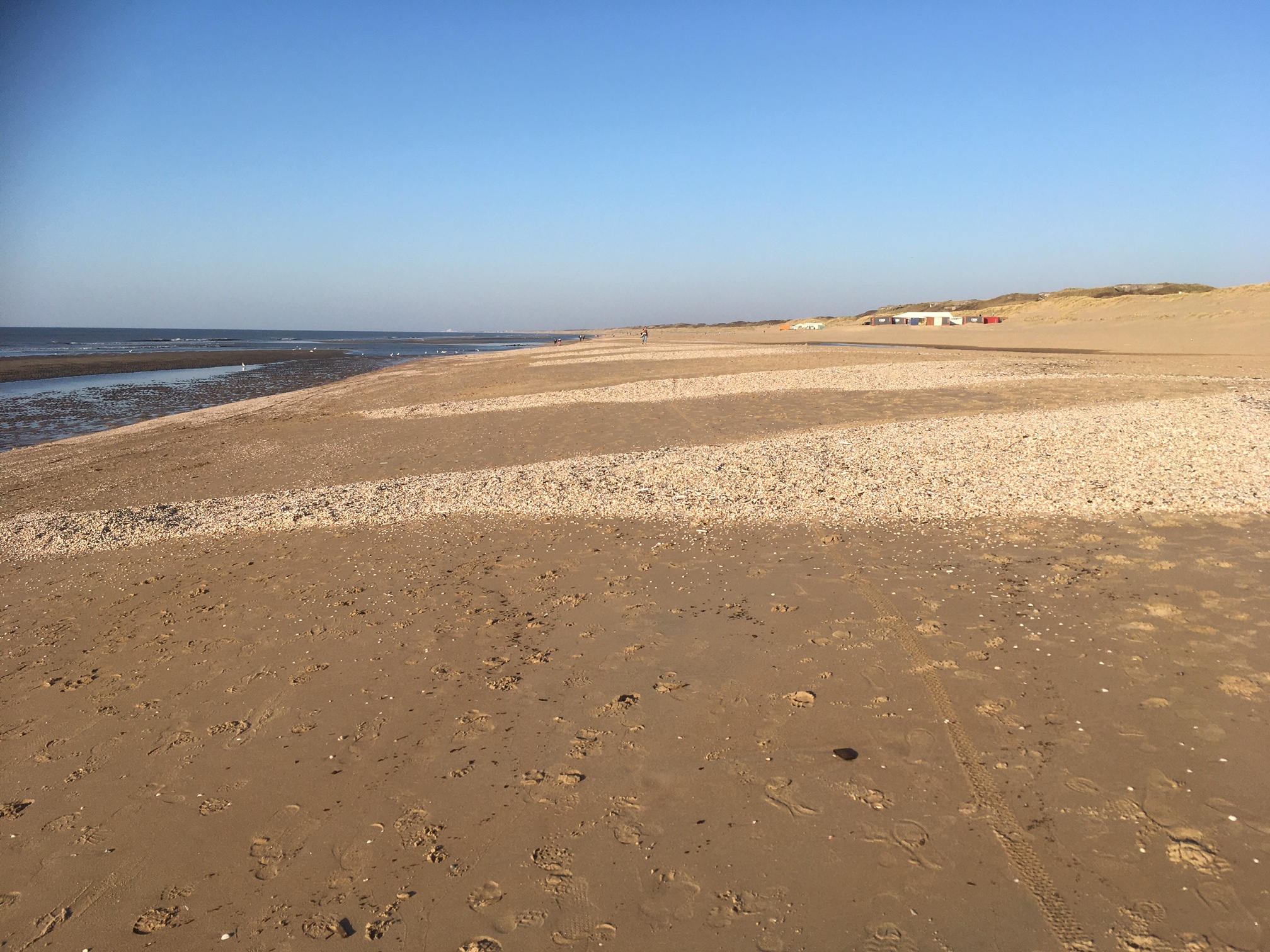Is there a coastal expert who knows why shellfish reefs wash up in wave shapes on the beach, asked a beach photographer. TU Delft researcher Matthieu de Schipper can help.
Why do shellfish reefs wash up in wave shapes on the beach? (Photo: Piet van Noort)
Beach walker Piet van Noort regularly Twitters under the name @pietjepier about coastal defence, the beach, sea and dunes. Last spring, he photographed wave shaped beds of shellfish on the beach. He asked on Twitter if anyone could explain the regularity of the shapes along the coast. Up to now, there was no explanation.
Delta found Dr Matthieu de Schipper through the grapevine. A coastal engineer, he became well known for his methods to take measurements by jet ski. Last year, New Scientist the Netherlands named him Science Talent of 2019. Yes, that Matthieu de Schipper. The one who works at the Faculty of Civil Engineering and Geosciences. He pointed us to an article entitled The Mystery of Beach Cusps on Amusing Planet, the popular science website. The article’s author Kaushik Patuwary explains that wave shaped shellfish beds – called beach cusps – are a worldwide phenomenon and gives examples from Dorset (England), California and Alaska.
Self-organisation
Wave action is the driving force behind the shellfish beds’ shapes, that is clear. But how do the waves do it? The start of the process is unclear, but once the shellfish beds start to form, it turns into a self-reinforcing process. A wave rolls over the top of a cusp and breaks to the sides, allowing the large sediment to sink into the bed, which continues to grow. The water flows along the sides of the bed further up the beach, picking up finer sand and meets the water from the adjacent bed in the middle. As the water flows back to sea, it quickly meets the next wave. The shellfish beds then grow while the beach between them are cleared. Most of the shellfish beds are a couple of metres long, but beds of 60 metres have been found.
The regularity of the cusps illustrates the chaos theory
But how the formation actually starts is still unknown. Why the cusps are so neatly arranged at the same distance, is something De Schipper can answer. He explains that researchers originally believed that the distance was determined by the wave patterns at sea. But since the arrival of the chaos theory in the 1970s, experts are tending towards self-organisation as an explanation. “The length between the cusps is determined by the characteristics of the sand and water,” says De Schipper. There are always small irregularities that spontaneously grow into clear patterns under the right circumstances. Wave shaped cusps share this phenomenon with regular cloud formations in the sky and the hurricane caused by the butterfly.
Paradoxically, the regularity of the cusps illustrates the chaos theory in practice. At least until the wind and current changes the wave pattern and everything flows into each other again.
- Self-proclaimed ‘chaos nerd’ Professor Jerry Westerweel (Faculty 3mE) mails about the butterfly effect: ‘Chaos theory says that to be able to predict the trajectory of a hurricane you would need to know the exact starting conditions. If you forget to include the air swirls from the stroke of a butterfly in the Amazon in your calculation, this can lead to different solutions for the orbit of the hurricane at some point. It may or may not cross a certain city. There are therefore fundamental limits to the predictability of a non-linear system. So it is not about causing a hurricane but about the validity of predictions.’ Thank you for that.
Do you have a question or comment about this article?
j.w.wassink@tudelft.nl


Comments are closed.